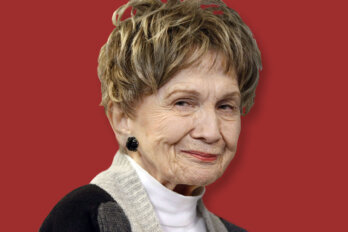Before I was a writer who put stories to paper, I was a kid who lived those stories in my backyard. Halloween was my favorite day of the year, as it gave me an excuse to walk around dressed like a cowboy. My grandmother tailored several iterations of my faux cowhide vest, dropping the armholes, trimming back the neckline and eventually extending the material to accommodate my height. I zipped into my leather chaps and boots—authentic, since I rode horses anyway—and topped it off with a white hat with a wide brim. My mom separated my long hair into two braids, which I either let fall down my back or tucked up into my imitation Stetson depending on how “Billy the Kid” I was feeling.
At eight, cupid-lipped and scrawny, I was the heroine of my own backyard Western. But even at play it was impossible to mold a persona that was both female and anti-hero. To be stoic in the body of a girl was to be snotty. To be decisive was to be bossy. To be trigger-happy with your Super Soaker was to be petty. And to summon the same look as the rogue cowboys in the movies I so loved—well, forget about it. Hiding my pigtails in my hat wasn’t going to cut it. In order to pull off the kind if bad-assery I’d seen on screen, I had to be a guy.
Last week, the National Post ran an article called “Redefining masculinity in Canadian literature.” In it, novelist Jay Hosking focused on three male writers who are leading the “recent surge in young authors publishing stories of men behaving badly.”
Naben Ruthnum, Kris Bertin, and Kevin Hardcastle are, according to Hosking, helping us shift away from the standard Canlit fare of “polite, neatly contained stories” identified by rural settings, heavy doses of regret and reflection and quiet moments of epiphany. Instead, the newer narratives feature brash and flawed protagonists. These damaged bros are conduits of tension, prone to questionable decisions that create high stake scenarios. It’s the kind of storytelling, writes Hosking, that not only promises to appeal to men but to the female readers who drive book sales—despite the fact that, as he admits, there are “disproportionately few women in the stories of this new brat pack, and often their roles are minor.”
The piece left me feeling like I’d dry-swallowed a pill. I certainly believe that writers should be celebrated for edging our literature into a thematic territory that, for some reason, has remained largely untraversed in Canada. And Ruthnum, Hardcastle, and Bertin appear to be doing just that.
But the pervasive—and the seemingly un-self-aware—ideology behind Hosking’s “redefining masculinity” thesis actually takes a big step backward from acknowledging a diverse national readership. Hosking’s argument assumes that all consumers of Canadian fiction regard the masculine experience to be the de facto one—the experience that is most accessible; the one that, as Hosking puts it, “seems to cross gender lines.”
What is a woman writer—a reader of fiction, interpreter of culture and media—to make of that casual supposition? It reads as just another statement of gendered elision. Stories about badly behaved men are for everyone, while stories about badly behaved women are for women.
The gender-transcending abilities of bad-boy lit are less a case of universal appeal and more a case of saturation—of “cultural relevance,” as the author Lynn Coady says in Hosking’s article, albeit achieved through constant visibility. It’s easier to trot out iconic examples of the bad-boy archetype from literature and film I’ve consumed over the years than it is to come up with examples of badly behaved women who exhibit comparable traits. (Do we even have a name for her, this type of character? “Bad girl” has a saccharine, patronizing sound to it, much more infantilizing than cool. “Bad woman” carries a distinctly Victorian connotation, as if it were meant to shame rather than to evoke admiration.)
Classic bad: The raspy edge to Clint Eastwood’s voice just before he’s about to draw down. Young-and-reckless bad: John Travolta’s leather jacket and lip-curled, cigarette smile in Grease. In American literature of the last century, the bad boy is so present he’s almost emblematic. Ernest Hemingway’s brooding, hunting-and-traveling, masculine-complex protagonist.; Raymond Carver’s tortured fuck-ups. Dennis Johnson’s hapless, drug-addled narrators, moving as if in a dream from one site of accidental violence to the next.
Kids know the many iterations of this character by heart. Students study it back to front. Teachers and professors assign it and celebrate it. Masculine badness is almost always equated with strength—even if that strength is concealed or temporarily impotent. To be bad is to be free of constraint, whether lawful or societal. To have the power to act and react, rather than observe. Instead of participating in a story—enhancing it, complimenting it, adorning it—a badly behaved man drives it. He has the ability to incite explosive plot points, pull the narrative tension taut, and bring things to a conclusion—often in a manner that is anything but quiet.
We hardly—if ever—ascribe these same qualities to women protagonists in novels and stories, whether Canadian or American. How, then, should we define a badly behaved woman? And if bad men protagonists are the new Swiss Army knives of this new generation of writers, puncturing Canlit’s lid and “opening up what’s possible”—as Walrus fiction editor Nick Mount asserts in Hosking’s article—then what is the woman at her worst?
Perhaps the biggest challenge with putting descriptors to this feminine version of the bad-boy archetype is that the effects of her badness are preemptively subdued by the lengthy list of “don’ts” society imposes upon her. It actually takes little in the way of action or demeanor to make a female character “bad” in the eyes of a culture almost entirely shaped by the male point of view, but little of that badness is allowed to entertain the casual reader in the guilt-free way her brat pack counterparts do. (That margin of “badness” widens even more considerably, I’d argue, when your female protagonist is also a woman of color.)
As the result, the best way to describe the badly behaved woman is through a series of “maybes.” She may be secretive and sly, generating narrative tension by withholding vital information from herself, others, or the reader, as Margaret Atwood’s young protagonist does in Alias Grace after being convicted for a murder she may or may not have committed. She may display a clear-cut awareness of what’s morally apt before making a deliberate choice to do or say just the opposite, as in British author Sarah Waters’s twisting tale of a Victorian girl-thief, Fingersmith. She may be promiscuous or contain desires that are larger than what she has or is. She may even long to act out violence or be running from a violent past.
But while she may exist outside of the law or against the cultural grain, she is never quite free of convention. Instead of being a symbol of strength, or a constellation of engagingly exaggerated actions and reactions, her badness turns her into something of an alien. “Men are generally not valued for their ‘goodness’ in the same way that women are,” author Amy Jones pointed out to me in a written exchange. “We are okay with our male characters being unapologetic rogues, but we need our female characters to be hookers with hearts of gold.”
Jones’s first novel, We’re All in This Together, was published earlier this year. In it, the matriarch of a Thunder Bay family throws herself over a waterfall in a barrel and her family into chaos, sending the narrative spiraling into all different directions and points of view. “I’ve had people tell me my female characters are ‘bad’ for everything from having one night stands to drinking to being mean to their mothers to leaving dirty dishes in the sink,” she continued. “If a female character is assertive, if she speaks her mind without apologizing or takes what she wants worrying about how other people will feel, then people see her as ‘bad.’ But to me, such characters are simply the most interesting.”
Amanda Leduc’s debut novel, The Miracles of Ordinary Men, was published by ECW Press in 2013. If Canlit has traditionally been marked and measured by realism, by moments of reflection and quiet epiphany, then Miracles is an ambitious departure. The story alternates between dual narratives. One half of the novel belongs to Sam, who undergoes a painful physical and spiritual transformation after he wakes to find he has grown wings (“greyish knobs of skin that unfurled from his shoulder blades and hung to just above his waist”). The other half belongs to Lilah, who blames herself for her brother’s disappearance and discovers a sort of penance through punishing sexual acts at the hands of her boss (“he hits her in the stomach, a fist down into her solar plexus. She moans and crumples into a ball on the bed”).
Both protagonists’ story arcs are harrowing, but it’s Lilah’s side of the diptych that easily competes with the best of the bad-boy narratives. The sections in Miracles that feature her inspire both horror and admiration, and, just as with many of Hosking’s fictional bad boys, we both want to see her saved and want to see her continue to act out. If such complex female characters rarely appear in Canlit, it’s because they challenge long-established cultural norms.
“There’s a stereotype of the badly behaved woman,” Leduc wrote to me from the Banff Centre. “She sleeps around, she’s rude, she doesn’t settle down, she’s a ‘loner’ in a different way than a man is (spinster vs bachelor). I feel like the badly behaved male character operates firmly within our reading culture while a badly behaved woman makes us uncomfortable, and it’s really hard to find a way around that.”
One way might start with making demands on editors, critics, and reviewers: seek out the badly behaved woman in the stories that come across your desks. You want to publish and promote fiction that recognize the experiences of a national readership? Great! But you’ll never achieve a “more inclusive Canlit with a diverse repertoire of voices” without including trailblazers like Jones and Leduc.
They’re not alone. Try Sheila Heti, whose novel–memoir hybrid How Should A Person Be? is a bawdy, witty, and unapologetic story about surviving a series of “bad” decisions and asks some hard questions about how we endure and inflict hurt on those who care about us. Or Yasuko Thanh, whose first book, a collection called Floating Like the Dead, sees her climb into the perspectives of protagonists who resist and skirt the periphery of cultural, familial, and personal expectation. Or Mona Awad, whose recently published, linked story collection, Thirteen Ways of Looking at a Fat Girl, is an affecting and defiant debut about body-image obsession that provokes both laughter and shock.
So not a Swiss Army knife, then. If she has to be a writer’s tool, the badly behaved female protagonist might be a lasso, holding fast to Canlit and squeezing until something gives.






